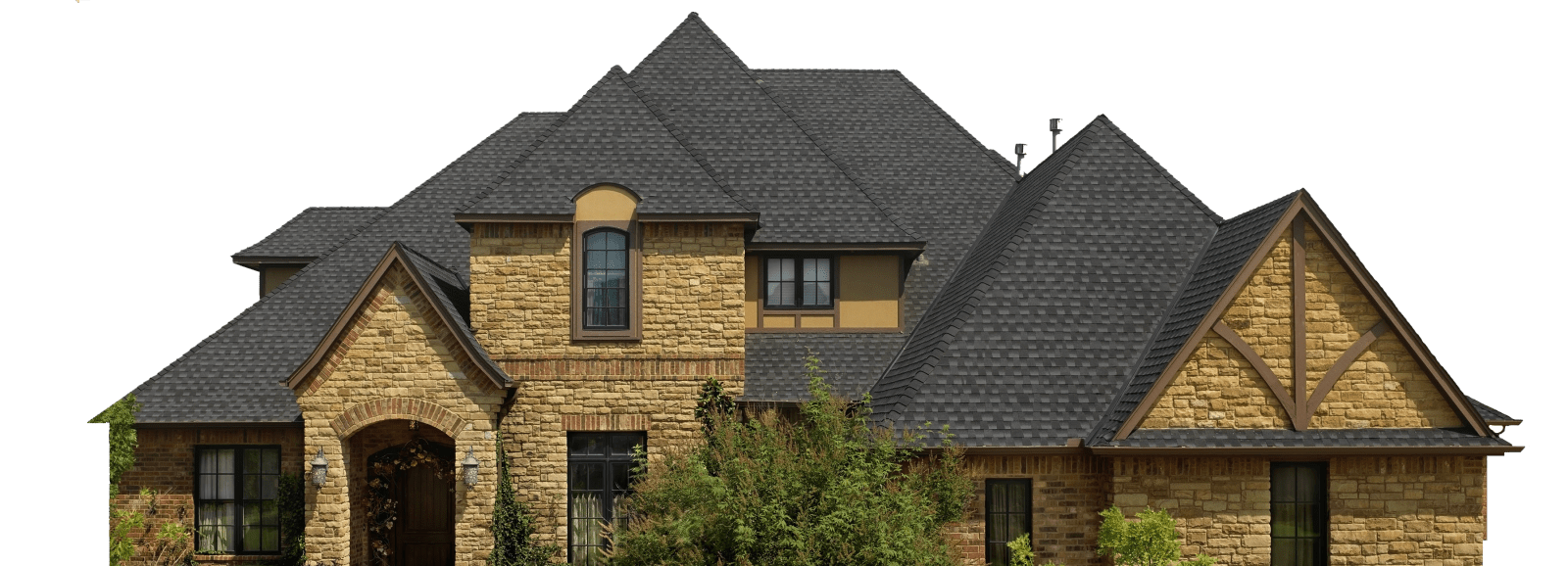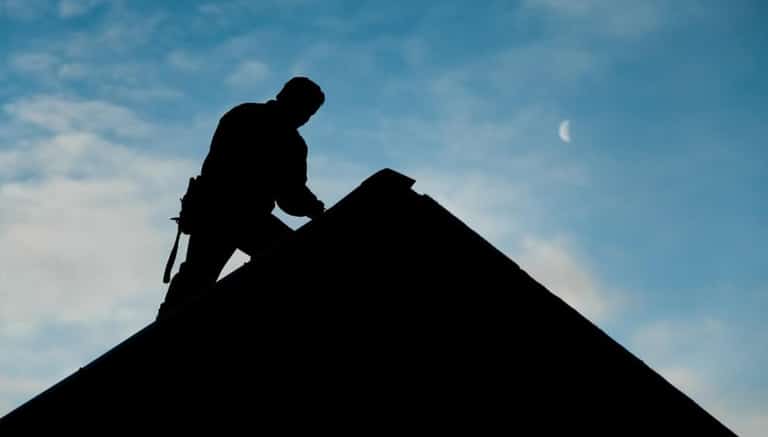FAQ
Commonly Asked Questions
- A contractor with an Elite Certification.
- A contractor that uses quality materials.
- A contractor with an Elite certification from an established manufacturer.
- A local contractor.
- A contractor that obeys the laws.
- A contractor with good online reviews and an excellent reputation.
- A contractor who can offer you a labor warranty from an established shingle manufacturer.
A contractor with an Elite Certification.
There is almost nothing to stop nearly anyone with a truck from starting a roofing company. Every year, dozens of new roofing companies open up, just to see the owners get in over their head, go out of business, and leave customers with shoddy work and no warranty to cover the roof that is now leaking. Or worse, horror stories of homeowners paying for a roof only to see the company go bankrupt and the work never get done.
Unfortunately for homeowners, each of the 3 major shingle manufacturers has two levels of certification that can be confusing. They all offer an entry level certification that typically only requires the contractor to show that they are licensed, bonded, and insured and write a check for a few hundred bucks. This level of certification only allows the contractor to offer the homeowner the lowest level of warranty protection and the entire warranty can be voided if the roof is installed improperly. This level of warranty offers the homeowner almost no protection.
Fortunately, the manufacturers also offer elite level ceritifications which are much more difficult to obtain. GAF offers a MasterElite certification, Owens Corning offers Platinum Preferred, and CertainTeed offers the ShingleMaster certification.
These elite certifications require that a contractor to go through extensive training on installing their products properly. To obtain ShingleMaster Elite certification, Stay Dry’s crews and account managers are required to pass a comprehensive test concerning both shingle technology and the Applicator test that covers the details of installing shingles correctly.
A contractor that uses quality materials.
Make sure that the contractor you choose is using quality materials. The big three shingle manufacturers are CertainTeed, Owens Corning, and GAF. These three American companies are extremely well established. The youngest is Owens Corning, with only 75 years in business. While old roofers could argue the merits of these three companies for hours, (and at Stay Dry, we have our reasons for believing CertainTeed is the way to go), the reality is that a roofer who offers you one of these three products is providing you a quality product.
Outside of these three products, the price, quality, and warranty coverage fall off quickly.
A contractor with and Elite certification from an established manufacturer.
Hiring a contractor with an elite certification gives you the peace of mind of knowing that your contractor has been trained and vetted by the shingle manufacturer. As a ShingleMaster Select applicator, Stay Dry can offer you a 25 year labor warranty backed by one of the nation’s oldest shingle manufacturers.
A local contractor.
Is the contractor at your door a local company? Are you sure? When a storm hits, roofers from all over the country will converge here and knock on your door. They know that the first thing many people will ask is, “Are you local?” Many of them will open up a temporary office in town and some may do business under an assumed name so that they seem like a local company. The issue with out of state contractors is that they aren’t around long enough to correct any warranty issues or correct any issues that arise from the installation of your roof. In many cases, these companies offer inferior materials, cut corners on installation, have had licenses revoked in other states, have poor reputations, and are gone in a few months, often leaving their customers with a poorly installed roof, and future roof leaks. The bad part about a poorly installed roof is that the evidence may not be evident for several months to many years. At that point, the contractor is long gone.
Choose a contractor that is licensed, bonded and insured.
Many states do not require that a roofing contractor be licensed. If so, is the company insured and bonded? A reputable contractor should be able to provide you with evidence of both without any hassle. For our clients, it’s a simple email to provide evidence of our credentials.
Make sure your contractor has a good online reputation.
With many online services that rate contractors and roofers these days, it can be foolish to enter into a large dollar contract without doing your due diligence on the company. Google has online reviews, Angie’s list, Home Advisor, the Better Business Bureau, etc. all provide good info. First check to make sure you’re dealing with a reputable company before entering into any sort of contract.
If you have an insurance claim on your roof, the insurance company is going to write the estimate for us. The insurance company will send out an adjuster who will decide the full scope of the work to be completed and issue an itemized loss sheet with market rates for the work to be performed. We don’t provide an estimate because we don’t know the scope of the work to be completed until the insurance company provides the itemized loss sheet.
Under our contract, we do the work for the amount the insurance company pays and your only out of pocket cost will be your deductible.
Waiving your insurance deductible is actually insurance fraud. There are fly by night companies that will sometimes waive deductibles. However, it is illegal and can also put you in a position to have charges brought against you for fraud by knowingly participating in this scheme.
Not legally. Most insurance policies are replacement cost value policies, which means the insurance will pay whatever it costs you to do the repair, minus your deductible. The loss sheet the insurance company provides is the maximum amount the insurance company will pay for the repair. After the work is complete, we send the insurance company an invoice showing the amount we charged you for the work we did.
Beware of companies that offer to waive your deductible or give you money back for your claim. Some roofing companies will send invoices to the insurance companies stating they charged customers more than they actually did in order to waive a deductible or let the customer keep money. This is insurance fraud and it’s illegal.
The adjuster will come out and look at the damage and decide whether there is enough damage to pay for your roof, gutters, siding, screens, and other exterior items. Your Stay Dry account manager is an expert on insurance claims and will point out the damage that he saw to give you the best opportunity to get your roof approved by the insurance company.
The bold letters on the top of our contract are clear about what happens if your claim is denied. If we can’t get your roof paid for by the insurance company, the contract is null and void and you don’t owe us anything.
If your account manager believes the adjuster was in error, we work with a public adjuster that we would be happy to recommend who can work with you to try to get your roof re-inspected and approved. There is no cost to you for the public adjuster.
If we are in your neighborhood, it is because a storm has hit your area. You’ll probably see a lot of your neighbors getting roofs. For this type of claim, rates are set on a zip code wide basis, so when all your neighbor’s get a roof, the rates in your zip code as a whole will go up. Your rate will most likely be going up, but it’s regardless of whether you file a claim individually for your house, so you might as well file a claim as well and try to get a new roof out of the deal.
Keep in mind that the install is a major construction project. Our crews will be tearing off all of your old roof. All of your old shingles and thousands of nails will be coming off of your roof. Depending on how steep your roof is, it’s impossible to prevent some of them from falling into your yard. Inside your house it will be noisy the entire day. You don’t need to be home and many people choose to do something away from home the day of the install .
If you have children or pets, please make sure to keep them out of the the yard. Nails and falling debris create a safety hazard.
On the day of the install, our crew will typically arrive as close to sunrise as possible. We finish most jobs in a day, but larger jobs or shorter days in the spring and fall occasionally mean a job may last more than a day or two.
Make sure you remove your car from the driveway. Our crew will be placing a rubber tired dumpster in your driveway and you don’t want to be driving on the driveway because you could get a nail in your tire.
After the install, our crews will go over your property with a magnetic sweep to pick up nails. We will do our best to get as many nails as possible but some nails will get caught in the grass. To help us get as many nails as possible, please mow your lawn as short as possible the day before the install.
We do a full tear off down to the decking. We will replace any bad decking. We replace any flashing that is approved by the insurance company. We install gutter apron along the eaves and drip edge on the rakes. We put ice and water shield in the valleys and synthetic underlayment on the whole roof. Then we put on the shingles and ventilation system of your choosing.
- You may notice that some of your neighbors roofs have several box vents at the top (commonly referred to as turtle vents) while others have a ridge on the top that can be made of exposed metal or covered with shingles (Ridge vents). Many homeowners prefer the aesthetic appeal of ridge vents over turtle vents, but ridge vents have several additional functional benefits as well.
Energy Savings
Both ridge and turtle vents act as exhaust for your roof. As the sun heats the air inside of your attic, hot air rises to the top. Your soffits, or the vents that are typically located under your gutters, allow cool air from outside to be sucked into your attic as hot air escapes out of your vents on the top, keeping your house cool in the summer.
Turtle vents are what’s known as a “passive” ventilation system, meaning that the only thing that the only force moving air through your attic is the tendency for hot air to rise. Turtle vents typically circulates air 4 to 5 times per hour. Ridge vents, on the other hand, are an “active” ventilation system. Wind blowing over your roof at 4 m.p.h. Or more will create a low pressure effect, like an airplane wing, and actually sucks the hot air out of your attic. This causes the air to circulate 7-8 times per hour.
Many homeowners living in two story homes have a second story that is uncomfortably hot in the summer, even when the air conditioning is keeping the first story uncomfortably cold. Most of the time, this is caused by the heat coming from a poorly ventilated attic. The solution is to insure you have both proper insulation and proper ventilation. But many of our customers have found that the problem is greatly improved just by upgrading from turtle to ridge vents.
Certainteed is a top manufacturer in the industry and has the very best roofing products on the market. They also offer some of the best warranties in the industry today.
A CertainTeed Select ShingleMaster roofing company is in the top 2% of roofing companies. It is a company that has undergone extensive training and scrutiny from CertainTeed and they are the only contractors who can offer you a 25 year labor warranty backed by CertainTeed.
To be a Select ShingleMaster contractor, CertainTeed requires that our crews and account executives all be trained in understanding the CertainTeed line of products to ensure that we provide each and every homeowner with the level of quality that CertainTeed expects from Select ShingleMaster contractors.
This is a question every homeowner should ask when getting a new roof. Did you know that the out of the box warranties from most shingle manufacturers are voided if they are not installed properly? If your contractor’s crew is not properly trained, you could be left no warranty protection at all. Given the frequency with which which roofing companies start up and go out of business, it is critical to understand who is protecting your roof.
The vast majority of roofers have the lowest level of certification from their shingle manufacturer. This certification allows them to offer the out of the box, limited lifetime warranty. These warranties will require you to pay a substantial portion of the cost of a new roof if you have a warranty issue. These warranties do not cover problems caused by poor installation. If you have a warranty issue, the shingle manufacturer will inspect the roof to insure the roof was installed correctly. That means if your contractor installs the roof improperly, you could be left with no protection whatsoever.
As a ShingleMaster Certified installer, we can offer you the SureStart warranty that includes a 25 year labor warranty. This means that your roof will be fully covered by CertainTeed, an American owned shingle manufacturer that has been in business for over 100 years.




